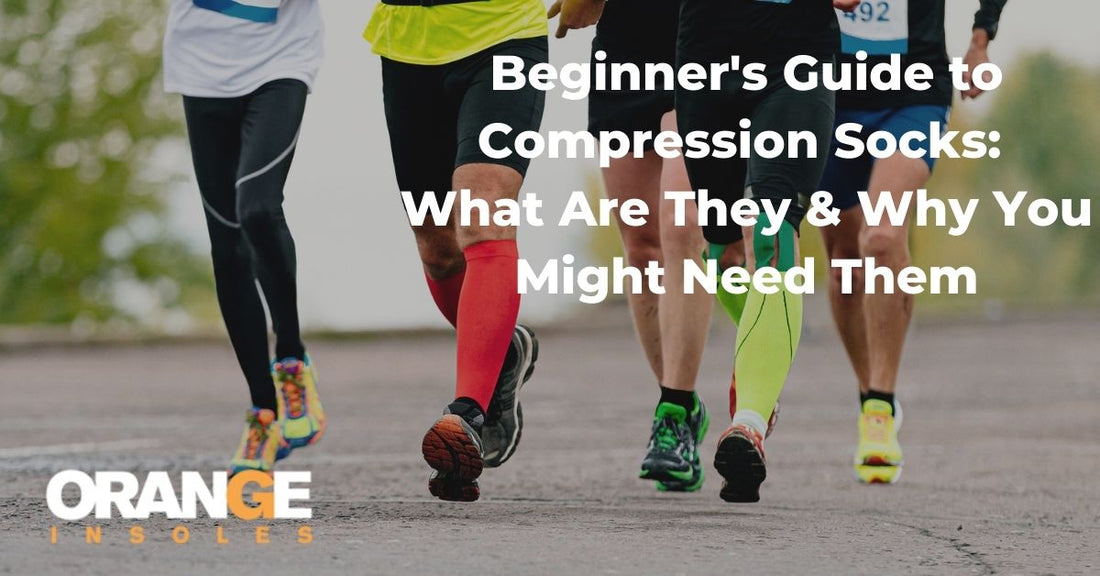If you have tired, achy legs, varicose veins, or even that jumpy leg syndrome that is so annoying when you’re trying to sleep, your doctor might recommend compression socks. Compression socks help improve circulation and are used for a wide variety of both serious and minor issues.
A great tool for your circulatory health, if you’re thinking about trying compression socks, this is a great place to start. We’ll take a look at the conditions they treat and how they work their magic.
What Are Compression Socks?
Compression socks can be made from a variety of materials, like cotton, nylon, wool, elastane, etc. but basically, they are made to fit snuggly and be stretchy. They usually range anywhere from $10 to $100 and can be bought over-the-counter or prescribed by your doctor.
They are designed with a “gradient pressure” meaning that they are tightest around the ankle and gradually decrease their squeeze as they move up the leg. This pressure improves blood flow up the leg, toward the heart.
Why Should You Wear Compression Socks?
Improving blood flow toward the heart (by decreasing the diameter of major veins) and increasing its volume and flow can help prevent swelling in the feet and ankles and prevent blood clots.
While they can help with a variety of medical conditions, which we’ll touch on, almost everyone can benefit from the effects of these socks. You might need improved blood flow in your legs if:
- You sit all day at work
- You stand all day at work
- You experience soreness after exercising
- You travel for long stretches at a time
- You’re pregnant
- You’re confined to a wheelchair
Even sitting just 90 minutes can decrease blood flow to your calves and feet by 50%- and increase your likelihood of developing a blood clot.
Though research hasn’t found proof of compression socks improving athletic performance, studies have found that they help with recovery since they reduce soreness by removing lactic acid from muscles. This means less tiredness and achiness the day after a good workout.
Conditions Treated With Compression Socks
Like we mentioned, lack of proper circulation can contribute to your chances of developing a blood clot, particularly deep vein thrombosis (DVT). Compression socks are often used to prevent this or mitigate other risk factors that lead to blood clots in people that might have a higher risk- like those who have just undergone surgery, those with edema, or swelling, in their legs, pregnant women, and people unable to walk. If you’re not moving, your blood isn’t circulating. These socks can help.
They are also often recommended for those with chronic venous insufficiency since it helps keep veins’ valves working properly.
For those with swelling due to complications from diabetes, sometimes using diabetic socks is a great choice. This is because they are better designed to prevent sores and other injuries that diabetics are prone to.
Finally, since they target swelling, they can also help prevent the formation of varicose and spider veins!
If you think you might have any of these conditions or want to start treating yourself, be sure to speak to your doctor.
The Right Compression Sock For You
Whether you have a serious condition or just want to use compression socks to feel better, you’ll need to take a look at mmHg.
The compression level of a sock is measured in mmHg and it ranges from 15 (light pressure) to 50 mmHg. Anything above 20 mmHg requires a prescription and a fitting.
Which compression is right for you?
- 15-20 mmHg: You can get these over-the-counter. These are good for traveling, athletes and to treat minor aches and pains.
- 20-30 mmHg: These are considered medical-grade class I. They are often used for some surgeries, swelling in pregnant women, and to treat varicose veins.
- 30-40 mmHg: These are medical grade class II. They’re used for lymphodema, DVT, and moderate to severe chronic venouse insufficiency.
- 40-50 mmHg: These are medical grade class III and are only used in cases where there is a severe risk of blood clot. They’re also used for wound management and lymphema.
How to wear compression socks safely
Under the supervision and approval of a doctor, compression stockings are perfectly safe to wear. Depending on your condition, you might need to wear them for a specific amount of time daily. It’s possible to overuse them or use the wrong amount of pressure.
Keep an eye out for these symptoms which might mean they're too tight and could do more harm than good.
- Chaffing
- Bruising
- Redness and temporary dents in the skin
- Skin irritations
If you notice any of these, it’s most likely time to get re-fitted! Look out for any fluctuations in your weight and/or other changes in your health if you’re wearing the socks continuously.
Keep Your Compression Socks in Good Shape
- Hand-wash them and hang to dry
- Discard the socks after about 30 wears; they lose their stretchiness.
- Even if it’s recommended that you wear them for long periods, be sure to take your socks off everyday and alternate with clean socks
- Follow instructions from the manufacturer
- Get fitted by a professional
With a bit of research, a chat with your doctor and the right sock, compression socks can be a great addition to your life to provide you with some much needed pain relief!

























































